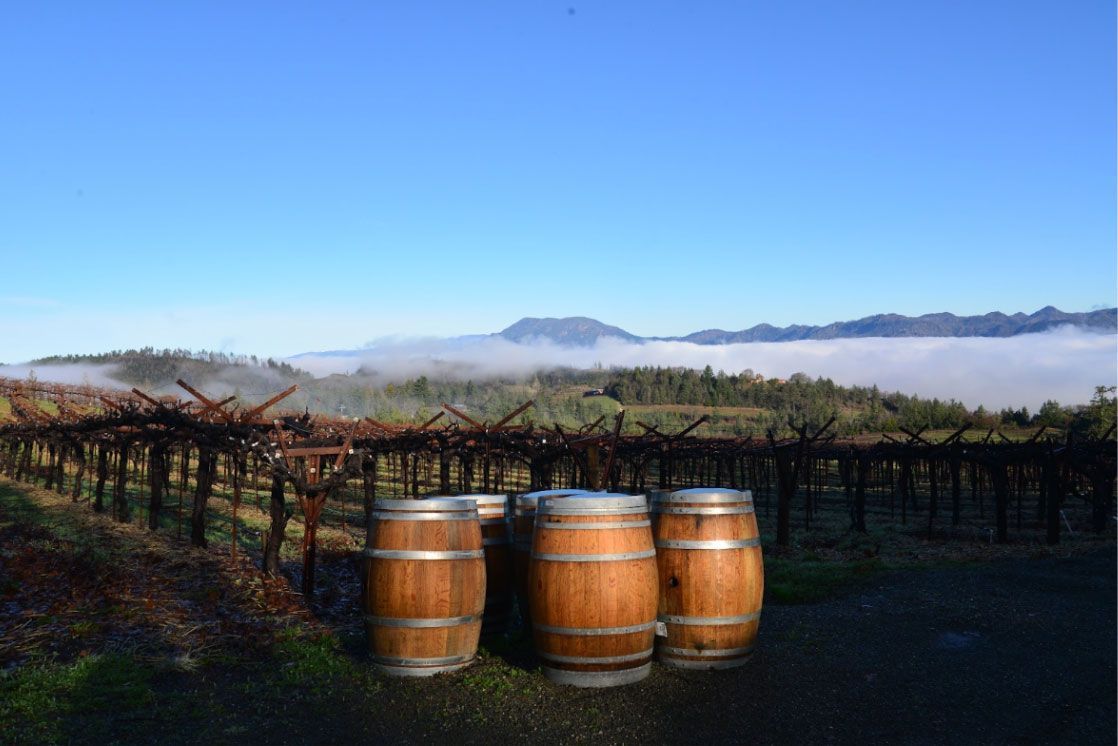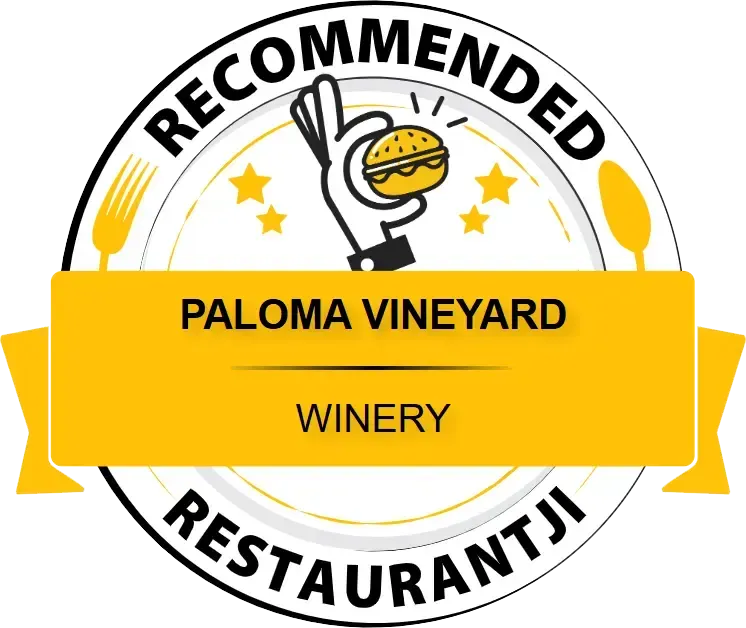A Wine Pairing Guide: How to Pair Wine with Food
September 15, 2023
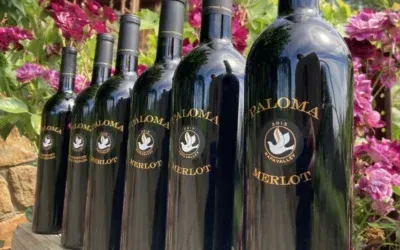
Selecting a bottle of wine to decompress from a hard day’s work is a luxury we all enjoy. On hot summer days, most reach for a refreshing bottle of white. But what happens when you are in the mood for something red? Or when you want to drink your wine with a meal?
The goal when pairing food and wine is to complement or enhance the wine as well as the food. What you don’t want to happen is have the wine make the food worse or have the food throw off the flavor in the wine you painstakingly chose.
Accomplishing the assembly for the perfect pairing can be a true art form. It is also something that anyone can do with the right set of tools. The key is learning the fundamental characteristics of wine, listening to the flavors you are experiencing, and adjusting with a bit of trial and error. To truly master this, it's helpful to learn how to taste wine
effectively so you can understand the interplay between the wine's elements and your meal.
There are many ways to pair food and wine. Here are our suggestions on how to get started, as well as links to recipes and food pairings!
The Five Fundamental Characteristics of Wine
Acid
Acid is the element that helps you pre-digest your meal. When drinking the wine by itself, does it make you salivate? The waterier your mouth gets after you swallow, the higher the acid in the wine. If you pair an acidic wine with something that is creamy—this can be a creamy sauce or just a creamy texture—your tastebuds will sing for joy! However, if you have your heart set on food that is lighter in nature, consider switching up your wine for something with a less acidic profile. For example, a Marsanne with halibut instead of Sauvignon Blanc.
Body
The body of the wine is significant. You can use it as an indicator of how heavy the meal should be. If you have a light-bodied wine, meaning the weight of the wine sits light in your mouth—like skim milk vs. whipping cream—it would be considered a lighter-bodied wine. These do not pair well with a heavy meal, like a rich, fatty roast. The meal would cast a shadow over the wine and make it hard to differentiate the varying flavors in the glass. Which is why you bought that special bottle in the first place, isn’t it? The goal should be to match the intensity of the wine with the intensity of the meal.
How else can you tell if your wine is lighter-bodied? Many wines aged in stainless steel—unoaked—tend to be lighter-bodied.
Tannins
Tannin is the element of dryness. It is naturally derived from the skin and the seeds of the grapes, as well as the oak developed in the barrel. Tannins are a great indicator of what food to pair with your wine. The dryness in the wine is soothed by our favorite fatty foods. This includes fatty meats or even creamy sauces. Do you see any overlap here with another characteristic we already discussed? Hint, hint: it’s acid! Pairing more tannic wines with fattier foods will make the wine taste smoother and cut the richness of the fatty meal to bring a beautiful balance to your mouth. Like a match made in heaven.
Aromatics
The aromatic component in wine drinking is important to consider. This is the age-old adage: what grows together goes together. If you smell the wine and smell the food you are preparing and they do not smell good together, chances are they will not taste good together. For example, let’s assume you are making pork pesto with roasted potatoes and French herbs, such as lavender, thyme, and rosemary. When you smell a light Italian red wine like Nebbiolo, which has notes of rose, leather, and anise, those aromatics are busy and the flavors will most likely clash. In contrast, the aromatics of a rack of lamb with a plum reduction paired with a mountain Merlot, such as Paloma, which typically smells of floral, ripe fruit, and spicy plum, will complement each other. Remember, what grows together goes together. And yes, lambs climbing mountains count.
Alcohol
Lastly, alcohol level is an element that should not be overlooked. A higher level of alcohol can overwhelm the wrong meal. Alcohol, like body, needs something a bit stronger to stand up to. Steer clear of light meals with high-alcohol wines. The wine will drastically outshine the food on the table and those beautiful fresh ingredients you slaved over will get lost. The meal will begin to taste solely like the wine you are drinking.
When you get the pairing just right
If it isn’t clear by now, the key to food and wine pairings is balance. Pairings can comfort and inspire the soul when it is just right! The fun part is the discovery of what works and what does not. Pairing Jambalaya and a semi-sweet Riesling can be a transcendent process of fireworks on the palate; Chardonnay and macaroni and cheese with a breadcrumb topping can be as warming as chicken noodle soup for the soul; and Merlot and pork sliders are perfect for an enlivened team brainstorm and BBQ.
We can all get intimidated by the idea of pairing food and wine. Often, we’re just scared of getting it wrong. But the truth is, that’s half the fun! Understanding food and wine pairings is accomplished, like anything, through the practice of trial and error. Don’t be afraid to learn (and fail) with others. Keep it fun and unpretentious by embracing the busts and celebrating the sublime successes. There will be plenty of both!
Looking for some recipes to try with your next bottle of Paloma?
Over the years, we have had our wines paired with some fantastic meals. Many of those chefs have shared their creations with us, so we want to start sharing them with you. You can find all of the recipes on our website under MORE -> OUR RECIPES. We will continue to add new recipes regularly, so keep checking in for new food pairings!
Here are some great examples to get you started!
Duck Breast with Medjool Dates & Caramelized Ginger Reduction
: Originally paired with the 2001 Merlot by Chef Terry Foshee at Geroge's At The Cove, we have paired this dish with the 2019
Merlot
that is reminiscent of the infamous '01.
Prawn Fettucine
: While this dish sounds simple, it is a lush tomato and butter-based pasta that is not only mouth-watering, but pairs exceptionally well with the lighter profile of the 2017 Merlot.
Sheldon's Heirloom Tomato Salad with Buratta Cheese
: This house favorite has had many variations, but they all include a heavy helping of fresh Buratta. Pair this with the elegant, single varietal 2014 Merlot
; the only vintage of its kind.
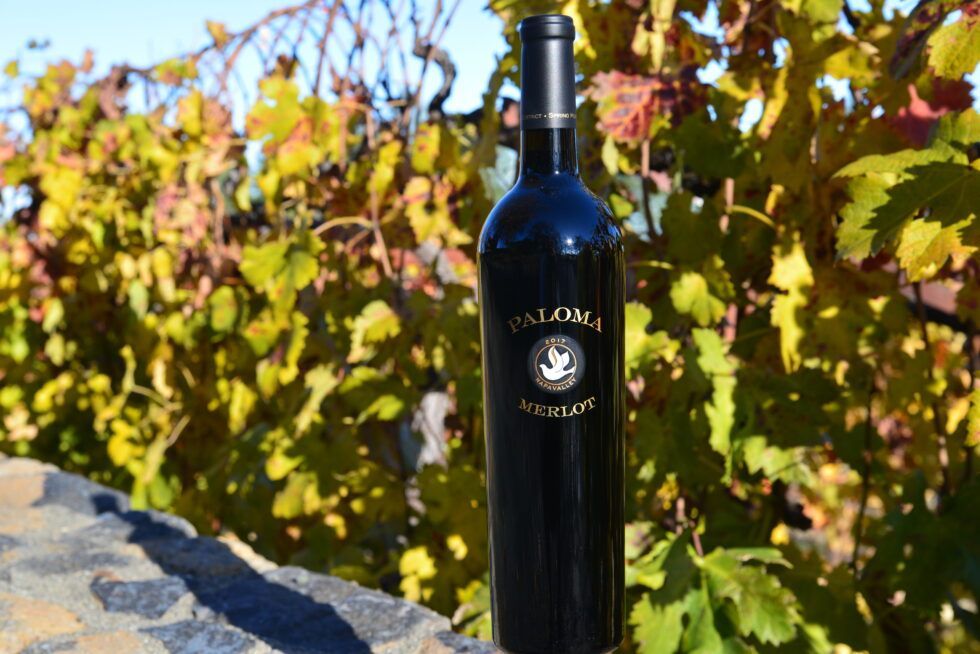
By caston_treetops
•
April 16, 2025
The swirled liquid boasts vanilla raspberry, plummy cassis, and a slight cooling floral undertone of cocoa. On the pallet, hot spice presents itself like cinnamon candy. The elegant tannins sting mid-way in this medium bodied wine. Swallowing leads to a long finish...
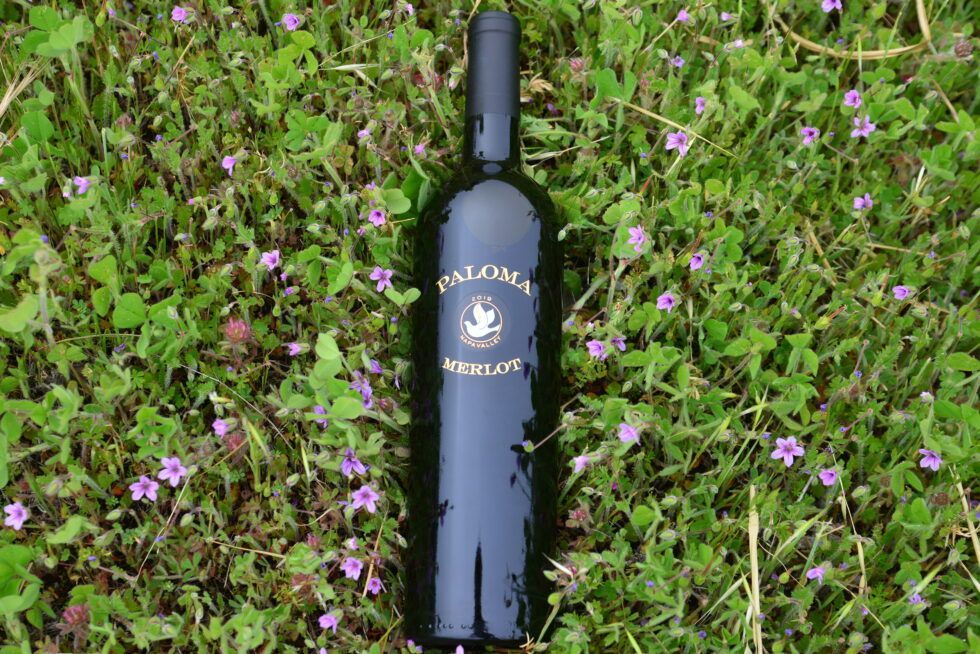
By caston_treetops
•
April 16, 2025
Paloma's 2019 Merlot opens with cranberry and rich cassis followed up with a slight dry mocha aromatic. This wine unfolds like a flower as you taste. It lands in the mouth with small strings of tannin and carries itself on a cool floral body. Its weight is just...
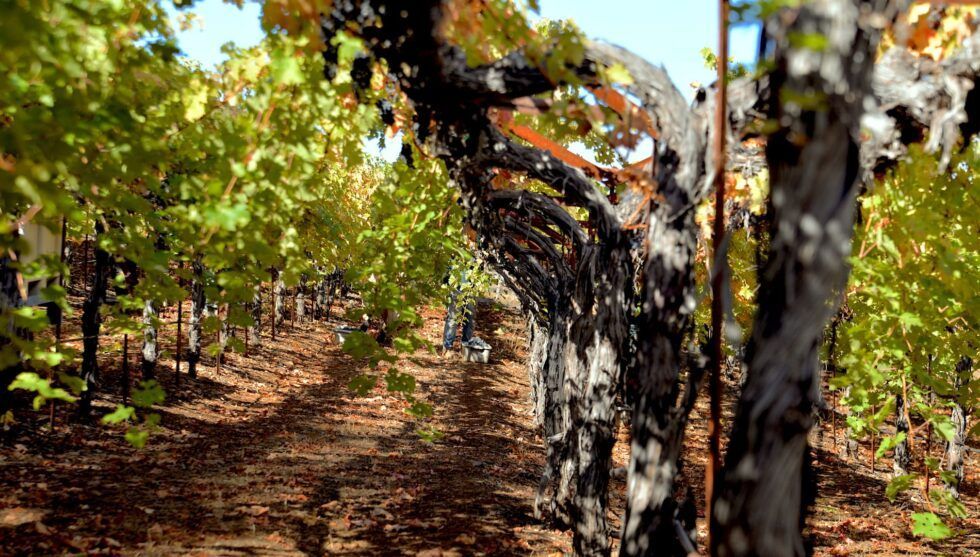
By WSI
•
March 26, 2025
At Paloma Vineyard, sustainability is more than just a practice—it’s the foundation of everything we do. Nestled on Napa Valley’s Spring Mountain, our small, family-run vineyard has been embracing sustainable and regenerative farming for over four decades. Every choice we make, from cover cropping to solar power, reflects our deep respect for the land and our commitment to producing exceptional wines that honor both our family legacy and the environment.
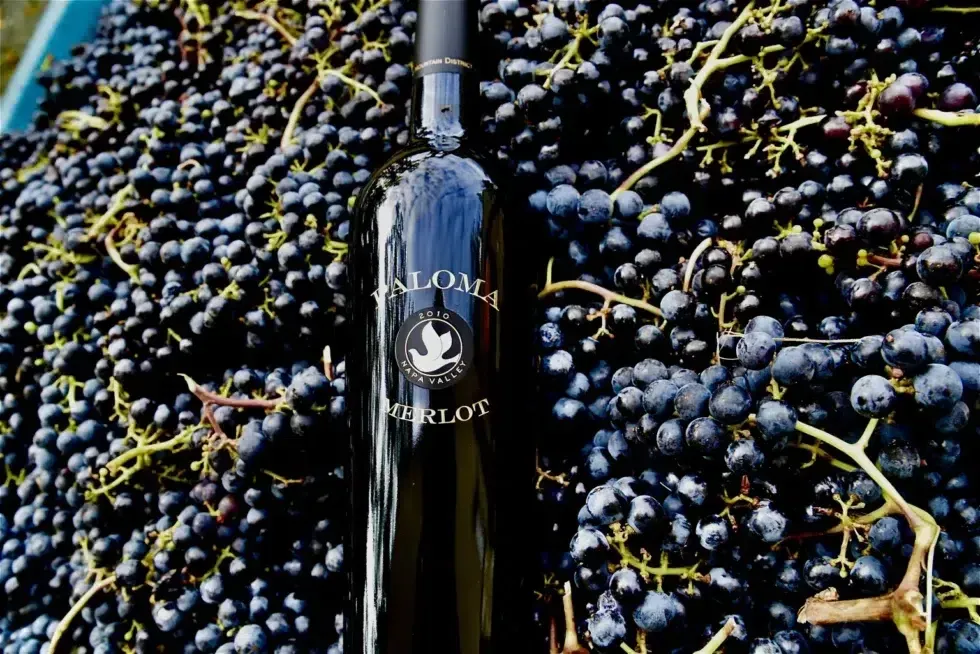
By WSI
•
March 6, 2025
Merlot has captivated wine enthusiasts for over two centuries with its smooth texture, rich flavors, and remarkable versatility. As one of the most widely planted grape varietals in the world, Merlot holds a prominent place on dinner tables and in wine cellars from Bordeaux to Napa Valley. But what makes Merlot so special? The answer lies in the grape’s adaptability, the care that goes into its cultivation, and the sense of place reflected in every bottle.

By taste_2420_views_enjoy
•
January 14, 2025
Have you ever been to a tasting where all you hear is the sound of the birds, wind, and the winemaker talking? No?! Then you haven’t visited Paloma Vineyard. Our personal team of furry greeters will meet you at your car and escort you up our steps to the owner’s home,...
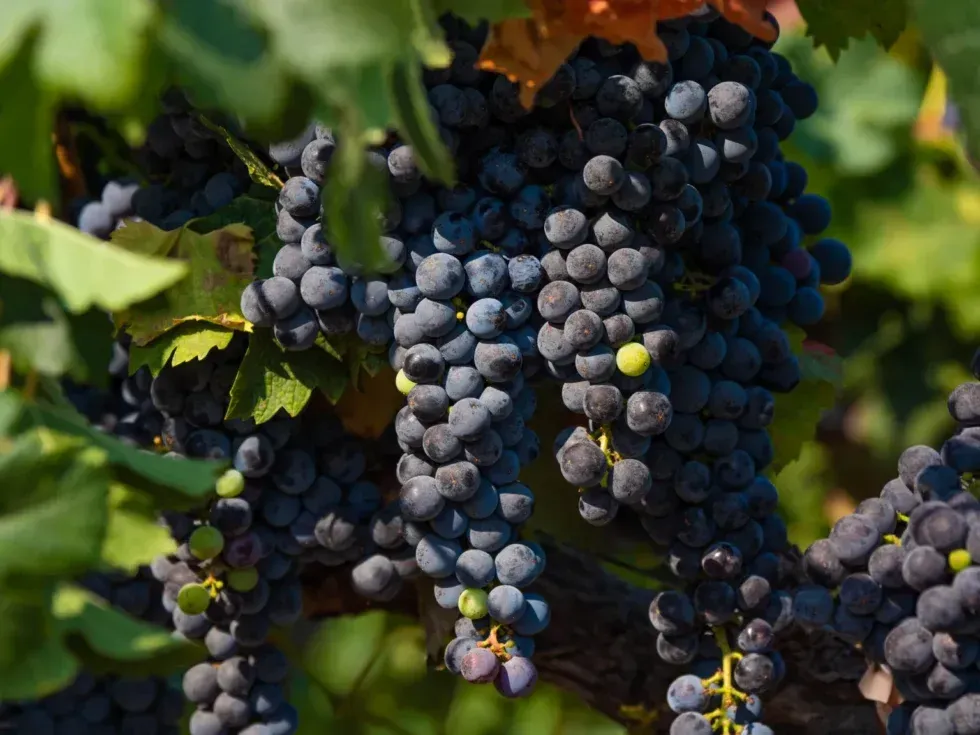
By taste_2420_views_enjoy
•
January 13, 2025
As Barbara, our matriarch, always said, “it starts in the vineyard.” Sustainability has become an essential practice for businesses looking to lead the way in their industry. While adapting to new practices can be challenging, it offers a unique lens to reexamine the...

By taste_2420_views_enjoy
•
January 10, 2025
Since Barbara and Jim purchased the 17 acres of land at the top of Spring Mountain in 1983, our goal has never shifted–creating a winery that feels like home. By 1992, that dream was fully realized when Barbara and Jim finished construction of their home inside the...
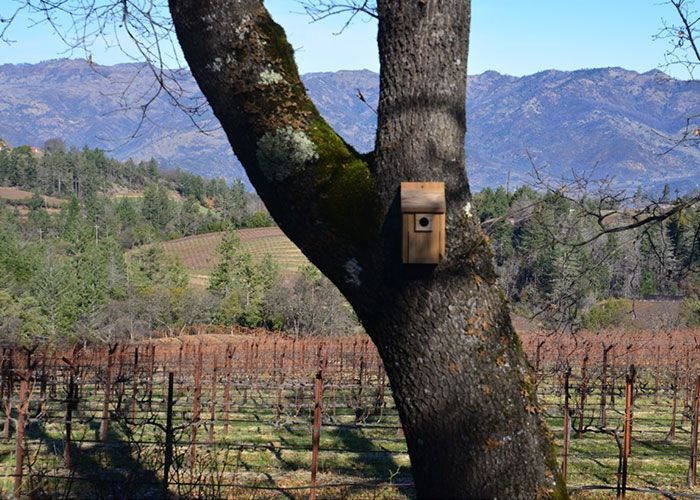
By taste_2420_views_enjoy
•
December 31, 2024
At our sustainable winery and vineyard , every choice we make reflects our commitment to preserving the environment and crafting exceptional wines. From innovative trellising systems to thoughtful vineyard management, we strive to balance nature’s needs with our vision for creating wines that tell a story in every sip.
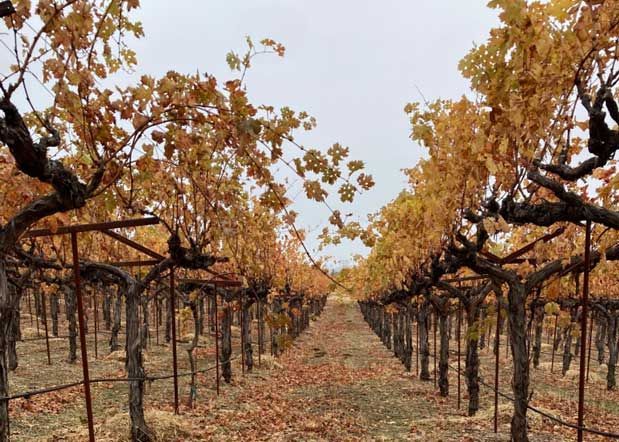
By p_hummingbird_2420_golden_rays
•
December 12, 2024
As a family-run winery on Napa’s Spring Mountain, we’ve spent over 40 years embracing methods that respect both the land and future generations. Sustainable wine and our winemaking is a year-round commitment, and for us, every decision, from vineyard management to bottling, is an opportunity to honor this responsibility.

